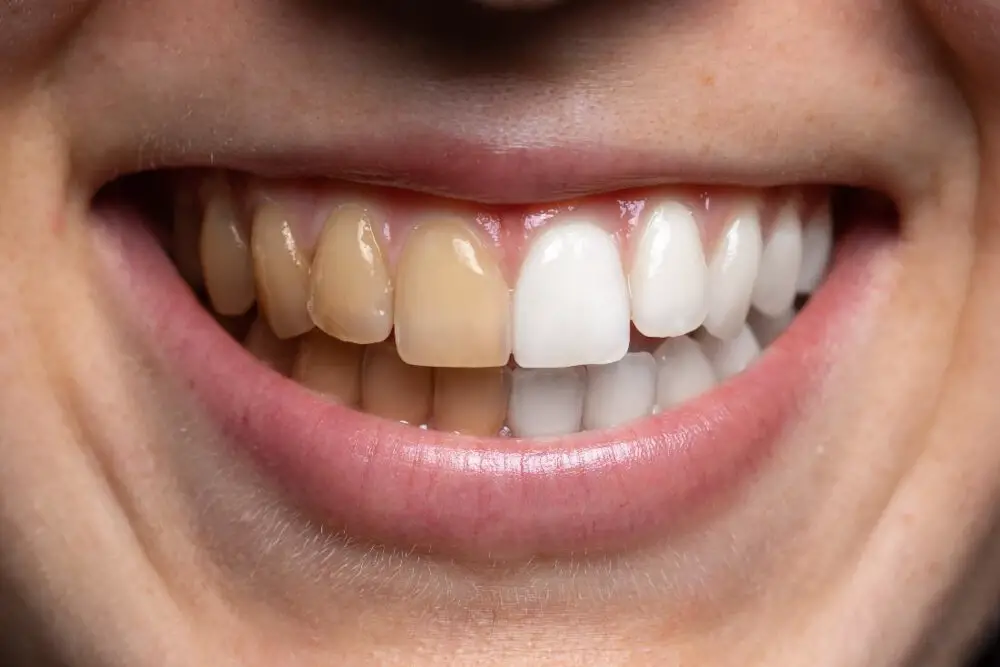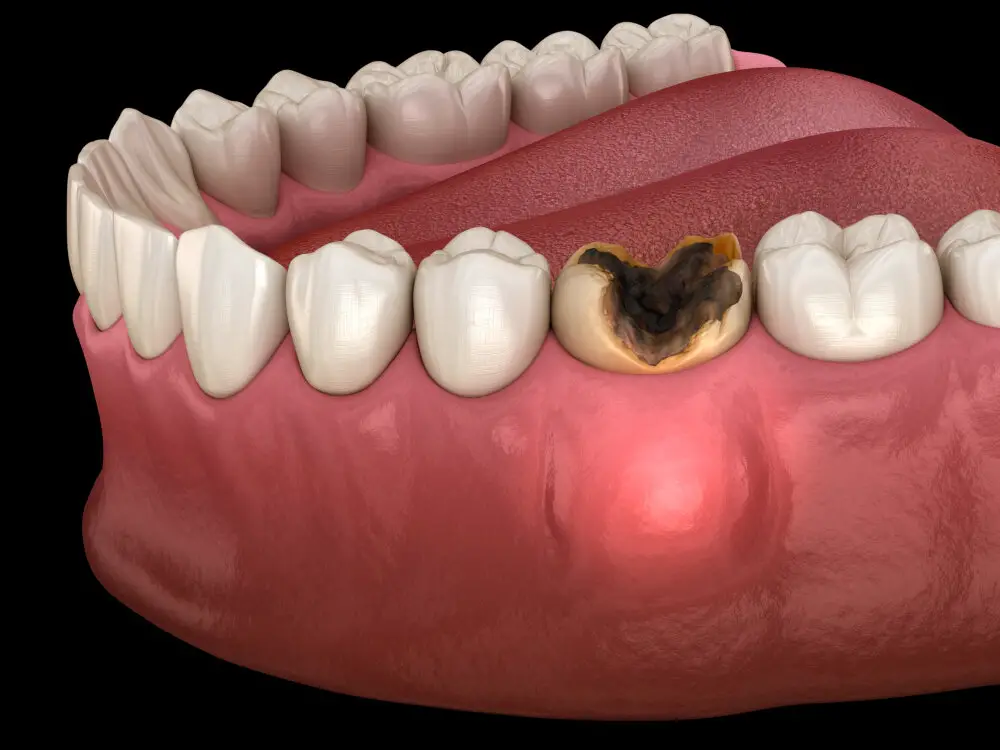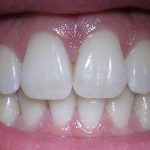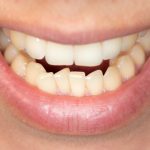Fluoride Varnish on Teeth: Optimal Time for Maximum Benefits

Fluoride varnish is a dental treatment that has become increasingly popular in recent years. This treatment involves applying a thin layer of fluoride to the teeth, which helps to strengthen the enamel and protect against tooth decay. While many dental professionals recommend fluoride varnish as part of a regular oral hygiene routine, there is still some debate over the optimal time for maximum benefits. To understand the optimal time for fluoride varnish application, it’s important to first understand how fluoride works. Fluoride is a mineral that is found in many foods and water sources. When it comes into contact with the teeth, it helps to remineralize the enamel, making it stronger and more resistant to decay. Fluoride varnish is a concentrated form of fluoride that is painted onto the teeth, providing a high dose of this beneficial mineral. While fluoride varnish is typically applied in a dental office, there are also at-home options available for those who prefer to take a DIY approach to their oral health.
Fluoride varnish is a dental treatment that involves the application of a high-concentration fluoride solution to the tooth surfaces. It is a quick and painless procedure that can provide numerous benefits, such as strengthening the enamel, preventing tooth decay, and reducing tooth sensitivity. The varnish is usually applied by a dental professional, and it forms a protective layer on the teeth that slowly releases fluoride over time. This treatment is especially beneficial for children, as it can help to prevent cavities and promote healthy tooth development. Additionally, fluoride varnish is safe and effective for people of all ages, and it can be used as part of a comprehensive oral care routine to maintain optimal dental health.
Fluoride varnish is a powerful tool in maintaining and protecting dental health. This varnish is a concentrated form of fluoride that is applied to the surface of the teeth. It has been shown to be effective in preventing tooth decay, remineralizing tooth enamel, and reducing tooth sensitivity. The optimal time for maximum benefits of fluoride varnish is during childhood, when the teeth are still developing and vulnerable to decay. Regular application of fluoride varnish can help prevent the need for more invasive dental procedures later in life. It is a quick and painless treatment that can be done in a dental office or even at home with the guidance of a dental professional. Overall, fluoride varnish is an important tool in maintaining healthy teeth and preventing dental problems.
What is fluoride varnish?

Fluoride varnish is a dental treatment that involves the application of a thin layer of fluoride-containing material on the surface of teeth. The varnish is usually painted onto the teeth using a small brush, and it dries quickly, forming a protective coating over the teeth. Fluoride varnish is a popular treatment for preventing tooth decay and strengthening teeth, particularly in children and adolescents. The fluoride in the varnish helps to remineralize the teeth, making them stronger and more resistant to decay. In addition, fluoride varnish can also help to reduce tooth sensitivity and improve overall oral health. The benefits of fluoride varnish can last for several months, which makes it an effective treatment for preventing tooth decay. The treatment is safe and painless, and it can be applied quickly and easily during a routine dental checkup. Fluoride varnish is particularly effective for children who are at high risk of developing tooth decay, as it can help to protect their teeth during the years when they are most vulnerable. Overall, fluoride varnish is an excellent way to promote good oral health and prevent tooth decay, and it is a treatment that is recommended by dentists and oral health professionals around the world.
Fluoride varnish is a highly concentrated gel-like substance that is applied to the enamel surface of the teeth to prevent tooth decay and strengthen the enamel. It is composed of fluoride, a naturally occurring mineral found in water, soil, and some foods, which is known to have a protective effect on teeth. Fluoride varnish works by forming a protective layer on the teeth that helps to prevent the growth of harmful bacteria and acids that can cause cavities. It is a safe and effective treatment that is widely used by dentists to help prevent tooth decay in children and adults alike. Its application is simple and painless, and it can be done in just a few minutes during a routine dental check-up.
Fluoride varnish is a thin, transparent coating applied to the teeth to help prevent tooth decay. It works by releasing fluoride ions, which strengthen the enamel and make it more resistant to acid attacks from bacteria in the mouth. The optimal time for applying fluoride varnish is when the teeth are clean and dry, as this allows the varnish to adhere more effectively. The varnish should be left on the teeth for a few hours, during which time the fluoride is slowly released. This gradual release of fluoride ensures that the teeth receive maximum benefit from the treatment. Fluoride varnish is a safe and effective way to protect teeth against decay, and is particularly beneficial for children and adults who are at high risk of developing cavities.
Fluoride varnish is a highly efficient and cost-effective method to prevent dental caries and tooth decay in both children and adults. The benefits of fluoride varnish include strengthening tooth enamel, reducing the risk of cavities, and promoting overall oral health. The varnish is applied directly to the teeth, forming a protective coating that releases fluoride ions over time. This process helps to remineralize the teeth, making them more resistant to acid erosion and bacterial damage. Research shows that the optimal time to apply fluoride varnish is every three to six months, depending on individual risk factors. By incorporating fluoride varnish into routine dental care, patients can enjoy the benefits of healthier teeth and gums, and a brighter, more confident smile.
How often should fluoride varnish be applied?

Fluoride varnish is a dental treatment that provides numerous benefits for dental health. It is a protective coating applied to the teeth to prevent tooth decay and cavities. Research shows that fluoride varnish is most beneficial when applied at regular intervals. The frequency of application depends on the patient’s dental health status and their risk of developing tooth decay. In general, it is recommended that fluoride varnish is applied every 3 to 6 months. The optimal time for maximum benefits of fluoride varnish is during routine dental check-ups. Regular check-ups allow dentists to assess a patient’s dental health and determine if fluoride varnish is necessary. If a patient has a high risk of developing tooth decay, the dentist may recommend more frequent applications of fluoride varnish. Children, especially those with braces or who are prone to cavities, may benefit from more frequent applications as well. It is important to follow the dentist’s recommendations for the frequency of fluoride varnish applications to ensure maximum benefits for dental health.
The recommended frequency of applying fluoride varnish on teeth depends on an individual’s oral health condition and risk factors for developing dental caries. For those who are at high risk of tooth decay, fluoride varnish application can be as frequent as every three months. On the other hand, those who have a lower risk of tooth decay may only need one application every six months or annually. It is essential to consult with a dental professional to determine the optimal frequency of fluoride varnish application on teeth. Routine application of fluoride varnish can provide maximum benefits, including strengthening of tooth enamel, prevention of tooth decay, and reduction of tooth sensitivity.
The frequency of fluoride varnish application is impacted by several factors, including the individual’s age, oral health status, and risk of developing dental caries. Young children are typically recommended to receive fluoride varnish more frequently, as their teeth are still developing and more susceptible to decay. Individuals with a higher risk of developing cavities, such as those with poor oral hygiene habits, a diet high in sugar, or a history of dental caries, may also require more frequent applications. Additionally, the general oral health status of the individual, including the presence of gum disease or other dental problems, may impact the recommended frequency of fluoride varnish application. Ultimately, the optimal frequency of fluoride varnish application should be determined by a dental professional in consultation with the individual’s specific oral health needs and circumstances.
Regular application of fluoride varnish on teeth can bring about numerous benefits. Firstly, it helps in strengthening the enamel of teeth, which is the outermost layer that protects them from decay and damage. This, in turn, reduces the risk of cavities and tooth decay. Secondly, fluoride varnish application can also help in remineralizing teeth that have already been damaged or weakened due to decay or erosion. Additionally, it can also reduce sensitivity in teeth by forming a protective layer over the exposed dentin. Regular application at optimal intervals can ensure that these benefits are maximized, leading to stronger, healthier and more resilient teeth.
Best time for application of fluoride varnish

Fluoride varnish is an essential dental treatment that helps to prevent tooth decay, especially in children. The application of fluoride varnish is recommended at specific times for maximum benefits. According to dental experts, the optimal time for fluoride varnish application is six months after the eruption of the first primary tooth. This is usually around the age of 6 months to 3 years. Fluoride varnish is a concentrated fluoride solution that is applied to the teeth to prevent decay and the formation of cavities. The application of fluoride varnish is also recommended for children who are at high risk of developing dental caries. This includes children who consume a lot of sugary foods and drinks, those with poor oral hygiene habits, and those with an underlying medical condition that affects dental health. Furthermore, fluoride varnish can be applied every three to six months, depending on the individual’s risk factors. Dental professionals recommend that fluoride varnish should be applied regularly to maintain optimal dental health. Therefore, parents should ensure that their children receive regular dental check-ups and fluoride varnish application to prevent tooth decay and promote healthy teeth and gums.
The ideal time for application of fluoride varnish on teeth is a crucial factor in obtaining maximum benefits from this preventive dental treatment. Research suggests that the best time for application is after teeth have been thoroughly cleaned and dried, as this allows for better adhesion of the varnish to the tooth surface. Additionally, applying the varnish before bedtime is recommended, as it allows for the fluoride to remain in contact with the teeth for an extended period, enhancing its effectiveness in preventing tooth decay. However, it is important to note that the ideal time for application may vary depending on the individual’s oral health needs and the recommendation of their dental professional.
In the current era of technological advancements, the use of applications has become increasingly popular and beneficial, even in the field of healthcare. The application of fluoride varnish on teeth is no exception to this trend, as it provides numerous advantages. Firstly, the application of fluoride varnish is a quick and painless procedure that can be easily performed by a dentist or dental hygienist. Secondly, it is highly effective in preventing tooth decay, especially in children who have a higher risk of developing cavities. Thirdly, fluoride varnish can be applied more frequently than other forms of fluoride treatment, thereby providing maximum benefit. Finally, the use of applications in dental care allows for better tracking of treatment progress and enhances patient engagement and education. Overall, the use of fluoride varnish applications has proven to be a highly effective and convenient method for maintaining optimal dental health.
The best time for the application of fluoride varnish on teeth depends on several factors. Firstly, it is important to consider the age of the patient, as different age groups require different frequencies of application. Secondly, the level of risk for dental caries should be taken into account, as those who are at a higher risk may require more frequent applications. Additionally, the time of day can also play a role, with some studies suggesting that applying fluoride varnish in the evening before bedtime may provide greater benefits. Other factors to consider may include the patient’s oral hygiene habits, diet, and medical history. Ultimately, it is important to consult with a dental professional to determine the optimal time for fluoride varnish application based on the individual’s specific needs and circumstances.
How to apply fluoride varnish?

Fluoride varnish is a protective dental treatment that can prevent tooth decay and cavities. It is a quick and easy procedure that can be done in just a few minutes. Applying fluoride varnish is a routine procedure that can be done by dental professionals, such as dentists, dental hygienists, or dental assistants. The process involves painting a thin layer of fluoride varnish onto the surfaces of the teeth, which hardens and forms a protective barrier over the enamel. To apply fluoride varnish, the dental professional will first clean and dry the teeth. Then, they will use a small brush or applicator to spread the varnish onto the teeth. It is important to avoid eating, drinking, or brushing for at least 30 minutes after the application to allow the varnish to fully harden and provide maximum benefits. Fluoride varnish can be applied to both baby and permanent teeth, and it is safe for all ages. Regular application of fluoride varnish can help prevent tooth decay and cavities, and it is recommended for those who are at high risk for dental caries.
When applying fluoride varnish, it is essential to follow certain steps to ensure maximum benefits. Firstly, the teeth should be cleaned and dried thoroughly. The varnish is typically applied with a brush, and a thin layer is painted on each tooth’s surface. It is important to avoid touching the gums or soft tissues with the varnish. The varnish should be allowed to dry for several minutes before the patient is allowed to eat or drink. After the application, the patient should be advised to avoid brushing their teeth for a few hours to allow the varnish to fully bond with the teeth. Fluoride varnish is a simple and effective way to prevent tooth decay, and following these steps can ensure optimal results.
When applying fluoride varnish to teeth, there are several precautions that should be taken to ensure maximum benefits. First and foremost, it is important to make sure that the teeth are clean and dry before application. Any debris or moisture on the teeth can interfere with the effectiveness of the varnish. Additionally, the varnish should be applied carefully and evenly to avoid any excess or missed areas. It is also important to avoid eating or drinking for at least 30 minutes after application to allow the varnish to fully set. Finally, it is crucial to follow the recommended application frequency and seek professional dental advice if any adverse reactions occur. By taking these precautions, individuals can ensure that they are getting the most out of their fluoride varnish treatment.
If you want to get the maximum benefits of fluoride varnish on your teeth, there are some tips that you should keep in mind. First of all, make sure you have a dental check-up before the application of fluoride varnish. The dentist will examine your teeth and determine if fluoride varnish is the best option for you. Second, brush and floss your teeth before the application to ensure that the varnish is applied directly to the tooth surface. Third, avoid eating or drinking anything for at least 30 minutes after the application to allow the fluoride to be absorbed into your teeth. Finally, make sure to follow your dentist’s instructions on how often to receive fluoride varnish treatments, as this will vary depending on your individual needs. By following these tips, you can ensure that you receive the maximum benefits of fluoride varnish on your teeth.
Fluoride varnish is a powerful tool in the prevention of tooth decay, particularly in high-risk populations such as children and seniors. It is applied topically to the teeth, where it forms a protective layer that helps to remineralize enamel and prevent the growth of harmful bacteria. By using fluoride varnish regularly, individuals can reduce their risk of developing cavities, gum disease, and other oral health problems. Moreover, the optimal timing for application can maximize its benefits, especially if applied twice a year. Overall, incorporating fluoride varnish into a regular oral hygiene routine is a simple, effective way to maintain good oral health and prevent dental problems in the future.
Fluoride varnish is a preventive dental treatment that can help protect teeth from decay and cavities. Research has shown that the optimal time to apply fluoride varnish is twice a year, at six-month intervals. This timing is based on the natural process of tooth decay and the effectiveness of fluoride in strengthening tooth enamel. By applying fluoride varnish every six months, the teeth are consistently exposed to the benefits of fluoride, which can help prevent cavities and maintain overall oral health. It is important to note that the optimal time for maximum benefits may vary depending on individual factors such as age, risk for tooth decay, and overall oral hygiene practices.
In conclusion, regular application of fluoride varnish on teeth offers numerous benefits, including prevention of dental caries, remineralization of enamel, and reduction of tooth sensitivity. The optimal time for maximum benefits is twice a year for individuals with low to moderate risk of dental caries and up to four times a year for those with high risk. The application of fluoride varnish is a simple and cost-effective method to maintain good oral health. It is important to consult with a dental professional to determine the appropriate frequency and method of application based on individual risk factors. By incorporating regular fluoride varnish application into a dental hygiene routine, individuals can enjoy improved oral health and a brighter, healthier smile.
Conclusion

In conclusion, the application of fluoride varnish on teeth is an effective method for preventing tooth decay and promoting oral health. However, determining the optimal time for maximum benefits can be complex and depends on various factors such as age, risk of decay, and frequency of application. It is crucial to consult with a dental professional to assess individual needs and establish a personalized fluoride varnish regimen. Regular dental visits, proper oral hygiene practices, and a balanced diet are also essential for maintaining healthy teeth and gums. Overall, the use of fluoride varnish, when used appropriately, can significantly contribute to the overall well-being of an individual’s oral health.








